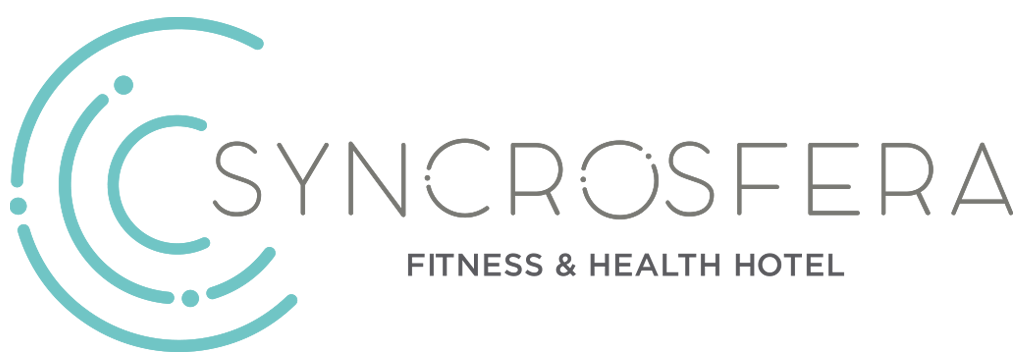FAQ – SYNCROLAB CLINIC
Syncrolab Clinic is a rehabilitation and physiotherapy clinic with 8 rooms to provide the best service to our patients. We have a great team of professionals specialized in their sector to help you improve your physical health.
Our facilities include personalized rehabilitation programs that ensure continuous monitoring and a close doctor-physiotherapist-trainer-patient relationship.
At Syncrosfera, we have facilities adapted to treat any injury both in cabin and room through a rehabilitation service.
01.
FISIOTERAPIA EN PEDREGUER
WHAT IS PHYSIOTHERAPY AT SYNCROSFERA, PEDREGUER?
Physiotherapy is a type of health science that combines manual treatments, treatments using physical agents (electricity, heat, magnetism …) and therapeutic exercise in order to facilitate the process of tissue repair and injury recovery for our body’s normal function of the organism.
There are different types of physiotherapy practice, but the most demanded is musculoskeletal physiotherapy, in which generally traumatic or sports pathologies are addressed.
CAN PHYSICAL THERAPY HELP ME WITH MY INJURY?
All musculoskeletal pathologies have a possible approach with physiotherapy.
Our team of physiotherapists will analyze and assess your pathology both analytically and globally to indicate the most correct way to follow to recover as soon as possible from your injury and return to being as functional as possible.
HOW MANY SESSIONS WILL I NEED TO RECOVER?
The number of sessions and the frequency of consultation will vary greatly depending on the pathology, the person who suffers it and their habits. Our professionals, after conducting an exhaustive assessment, will be able to make an approximation of how long you might need, but it usually depends on the evolution of the symptoms and tissue repair.
SHOULD I GO TO PHYSICAL THERAPY ONLY WHEN I HAVE PAIN OR AN INJURY?
It should not be like that, in physiotherapy we also work from prevention, detecting where there could be certain deficits in the biomechanics of the gestures that you may be developing repeatedly during the day to prevent them from causing an injury in the future.
HOW IS THE FIRST VISIT?
During the first visit, our professionals conduct an interview where they ask about certain aspects that may affect the pathology or the normal function of our body. Subsequently, a physical and visual examination of the area that may be affected is carried out by executing specific tests that can determine the type of problem that you may suffer. As a result of this assessment, an adequate diagnosis and treatment is carried out for each pathology, combining manual therapy, treatment with the most avant-garde technology and therapeutic exercise; making your recovery as effective and simple as possible.
HOW SHOULD I DRESS TO THE APPOINTMENT?
We recommend wearing comfortable and not too tight clothing, it depends on the type of treatment to be carried out and the affected area may need to work in underwear, for this the patient will also be provided with towels to take care of these garments and provide the patient with privacy.
HOW LONG DOES A SESSION LAST?
Generally our sessions last around 60 ‘, it is possible that sometimes they extend a little more depending on the use of the technology that is needed in each case, but in general terms the session lasts 1 hour.
CAN YOU WORK ON TWO DIFFERENT PATHOLOGIES IN ONE SESSION?
Preferably not. As a general rule, a pathology needs a long time to be able to make an optimal assessment, treatment and advice. In the case of dividing the session for two different treatments or more, the quality of the service provided to each one could be affected, since it would not be given the necessary attention and time for each one.
ARE PHYSIOTHERAPISTS REGISTERED?
All our physiotherapists practice their profession backed by the ICOFCV (Illustrious College of Physiotherapists of the Valencian Community). All of them have been trained through a university degree in physiotherapy and specialized with postgraduate degrees in different branches of physiotherapy.
CAN I CHOOSE MY PHYSIOTHERAPIST AT SYNCROSFERA, PEDREGUER, WHEN I MAKE AN APPOINTMENT?
Of course, we generally try to have the same professional attend most of the appointments of the same patient to have an optimal follow-up of the evolution of each one. Our team is trained in its own methodology that makes everyone work in a very similar way, so that any of them could be adapted to the follow-up of each patient even being referred from a colleague, since they would be informed of their entire medical history and evolution to continue with his recovery process.
02.
PODIATRY
WHO IS THE PODIATRIST?
The podiatrist is the health professional with university studies, prepared to diagnose and treat all foot pathologies. We understand a foot specialist as a podiatrist.
WHEN TO GO TO THE PODIATRIST IN SYNCROSFERA, PEDREGUER?
Before any warning sign in our feet, pain, infection, incarnate nail, wounds and / or ulcers … ultimately, before any pathology that occurs in our feet. The podiatrist will make a diagnosis and start the best available treatment.
AND IF MY FOOT DOESN'T HURT AT ALL, IS IT ADVISABLE TO GO TO THE PODIATRIST?
It is always advisable to make an annual visit with the podiatrist, regardless of our age, to confirm that everything is fine and clarify any doubts you have about foot care (choice of footwear, hydration, control of sweating …)
SOMETIMES MY FEET ITCH. WHAT CAN IT BE?
Itchy feet is usually a symptom of a fungal infection, but in many cases this infection is caused by other factors such as excessive sweating, improper drying of the feet, direct contact with the fungus …
Before any itch in the feet it is advisable to make a diagnosis and treat the infection from the base.
WHAT IS THE BUNION?
The bunion (as it is commonly called) or hallux abductus valgus is a deformation that affects the first metatarsophalangeal joint together with its two sesamoids.
Said deformation causes the head of the first metatarsal to deviate medially (inward) and the proximal phalanx to deviate laterally (outward), generating a dysfunction on said joint.
Sometimes it can be painless and at other times it can cause pain and difficulty in putting on shoes and even walking.
DO I NEED INSOLES?
Insoles help redistribute pressure, balance forces, and position the joints to improve the function of the foot and the rest of the musculoskeletal system. In the case of children, they will allow us to correct alterations in a high percentage of cases.
The insoles are made by 3D printing, making them perfectly compatible with the usual use of footwear.
MY CHILD WALKS INWARD. MAY MY CHILD NEED INSOLES?
Inward walking can be a sign that your child has an altered rotational pattern that affects walking time. Through the biomechanical study, it is possible to determine what pathology is causing the feet to turn inward during gait and initiate timely treatment, which may or may not include insoles treatment.
I HAVE DIABETES. HOW CAN THE PODIATRIST HELP ME?
Before this type of pathology, it is advisable to carry out control visits to be able to carry out a correct prevention on our feet. Diabetes can cause the amputation of several segments of the foot or feet, therefore, the best treatment is prevention.
It is important to control pressures to avoid the appearance of ulcers, check any friction or wound and act as soon as possible to avoid superinfection and, above all, the most important thing is to educate the patient so that he is able to detect any change that occurs in his feet and can act as soon as possible.
DO I HAVE TO BE A PROFESSIONAL RUNNER TO HAVE A BIOMECHANICAL EVALUATION?
No, to the contrary, a biomechanical evaluation is recommended for popular and professional runners. Remember that popular runners do not have refined running technique and are more prone to injury.
WHAT BENEFITS WILL I GET IF I UNDERGO THE BIOMECHANICAL EVALUATION?
The biomechanical evaluation consists of observing and knowing how our joints behave while we walk, run, play soccer, golf … Through the study, joint deficits are known and which muscle group may be the cause, once detected a program of totally personalized rehabilitation for each patient.
All this allows to release tensile stress in soft tissues, improve joint alignment, increase joint range, reduce pressures, balance the forces and their levers articulares.

